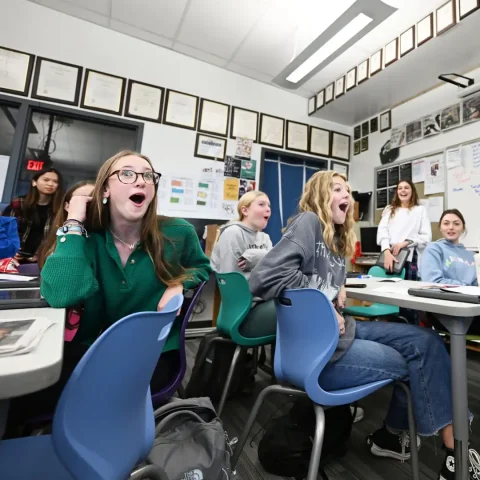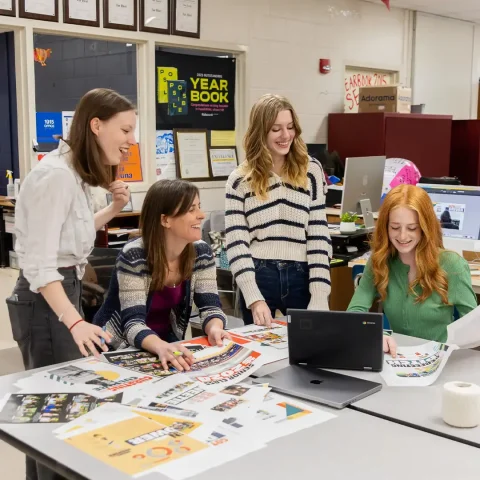Though a real artist would never buy a paint-by-number kit, I have done so. I especially remember one.
By the time I got around to opening it, the yellowish-cream-color cup had dried and so had my chances for making a beautiful painting. I tried various solvents such as drops of fingernail polish remover. The cup of paint remained dead.
Plan B. I would substitute the color most like the dead one. I would just paint the pinkish-cream color in the spaces identified for the yellowish cream. After all, someone who would buy such a kit probably is not too discerning. There could not be that much difference in shades of the color cream or ivory or off white. I called it cream.
Well it turned out, there was a difference. As I completed the picture, I realized it would never have any value. The pinkish cream could not substitute for the yellowish cream. Regardless of how small the areas that called for each one, the picture looked ridiculous without the designated coverage.
This single paint-by-number experience reminds me of the roles individual yearbooks play in the annals of the world.
The role of the yearbook staff at each school is to offer to the world an accurate picture of this year at this school. Staffs often accept this role with standard campus events such as school plays and student government activities. Some staffs try to substitute roles, however, for professional journalists in national or international events. Such substitution is not needed. The need is to search for ways people on this campus are affected by the world news. Localize the news.
Localizing does not mean ignoring. Localizing news stories means showing how people on this campus acted or were affected in relation to the big item.
For the annals of the world, professional sources will record that meteorologists ranked Hurricane Katrina, the hurricane that devastated New Orleans on Aug. 29, 2005, as a Category 5 storm. High school yearbooks in distant states do not need to copy such information to record or even to scour for photos of the distant events. Walsworth’s Year in Review current events supplement provides professional photographs of those distant events. High school yearbooks from around the country do need to show how these events affected the students at this school.
Some books showed vignettes of students who came new to the school after losing homes and jobs in the hurricane’s wake. These students became a part of this school. The students themselves had new perspectives on life. These students had learned to be thankful they were alive, thankful they could see their parents and siblings. Having lost houses, clothes, computers and uniforms paled in the new perspectives.
More than one book told stories about families sharing their homes with refugee relatives. Few things would affect a teen’s life more than sharing a bedroom and bathroom with one more person, especially a person usually seen only once a year or every other year.
One book told about a boy who went to the New Orleans area on a mission trip. He came home and launched his own campaign to send drinking water.
The rest of the school year after Katrina, other students around the country gave time, money and effort to help. These activities the yearbook must record.
Before the Asian tsunamis of December 2004, the word tsunami was foreign to many of us. But as we learned the word, we also learned that students in several schools around the country had close ties to the ravaged area. One book told the story of a student who, with her family, flew out of that area Dec. 24, 2004, before the tsunamis began Dec. 26.
Another book showed a student who had many relatives in the area. Only a few survived.
More books showed how students had participated in help efforts.
After Sept. 11, Matt Wright, our staff photographer, went to New York City to take his own pictures for our book. Any viewer can tell where the photos were taken. Still they held more meaning to us because we knew Matt took them for us. Even with Matt’s pictures, the staff also included art and other expressions of grief created by students on campus.
Even the war affects our students. Our staff found a student whose mother and father were both deployed out of the country. As the oldest child, the sophomore played the roles of both parents to her siblings.
The yearbook from Boone High School in Orlando, Fla., carried a story about a teacher whose wrongful felony accusation had been a statewide story, but the staff wrote an original story of the man on campus. They wrote a more intimate story than professional media because their perspective was different and their audience was different.
These stories are the duty of the yearbook staff. Nobody else is recording these stories, certainly not from the staffs’ perspectives. These are, however, very real pigments in the total canvas. One story cannot substitute for another’s designated coverage in the total picture of the history of the world.



